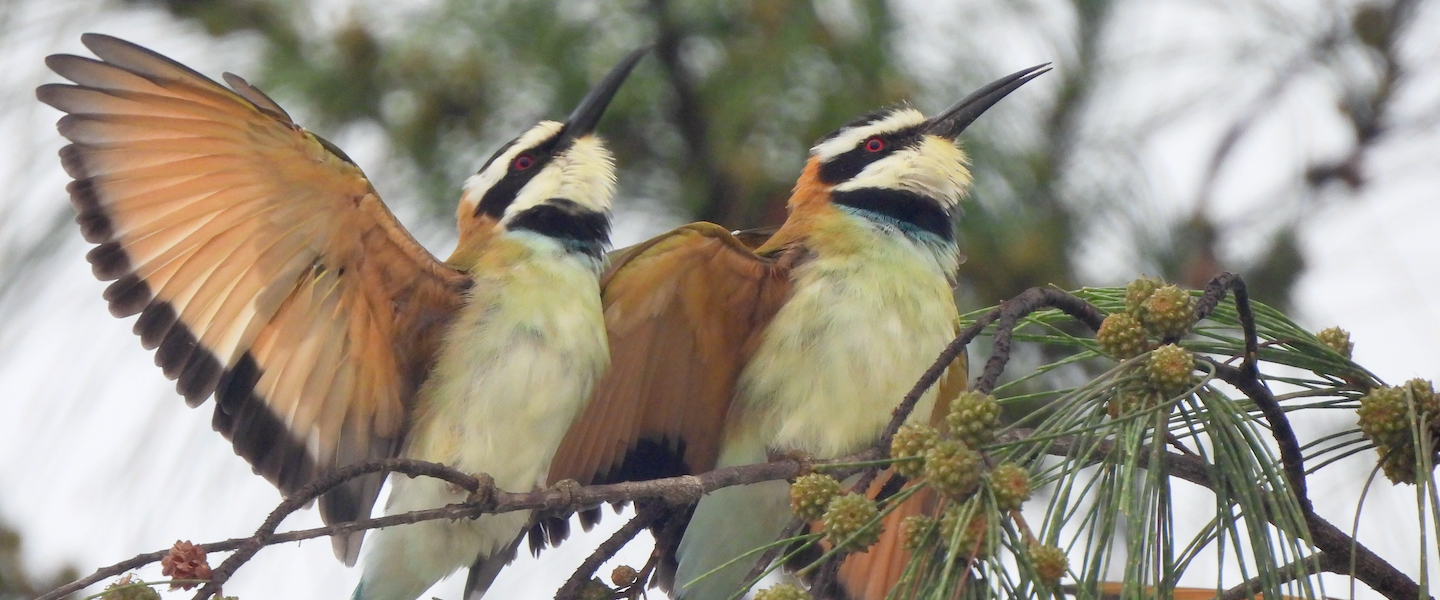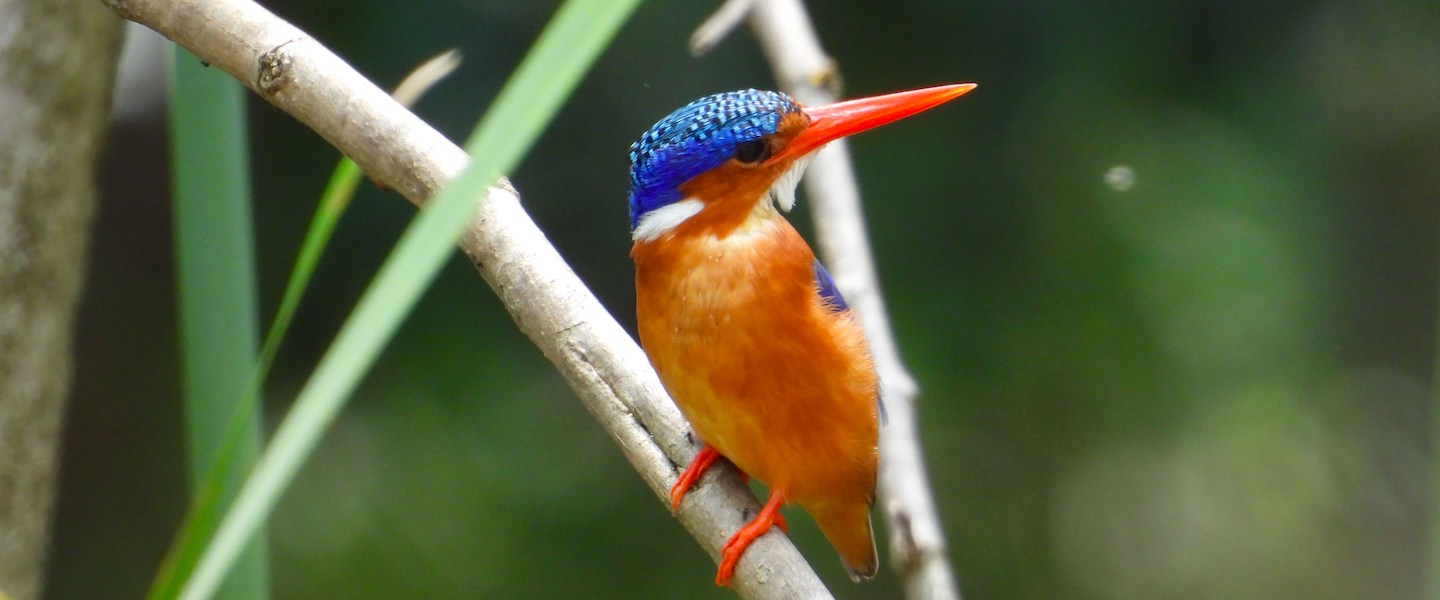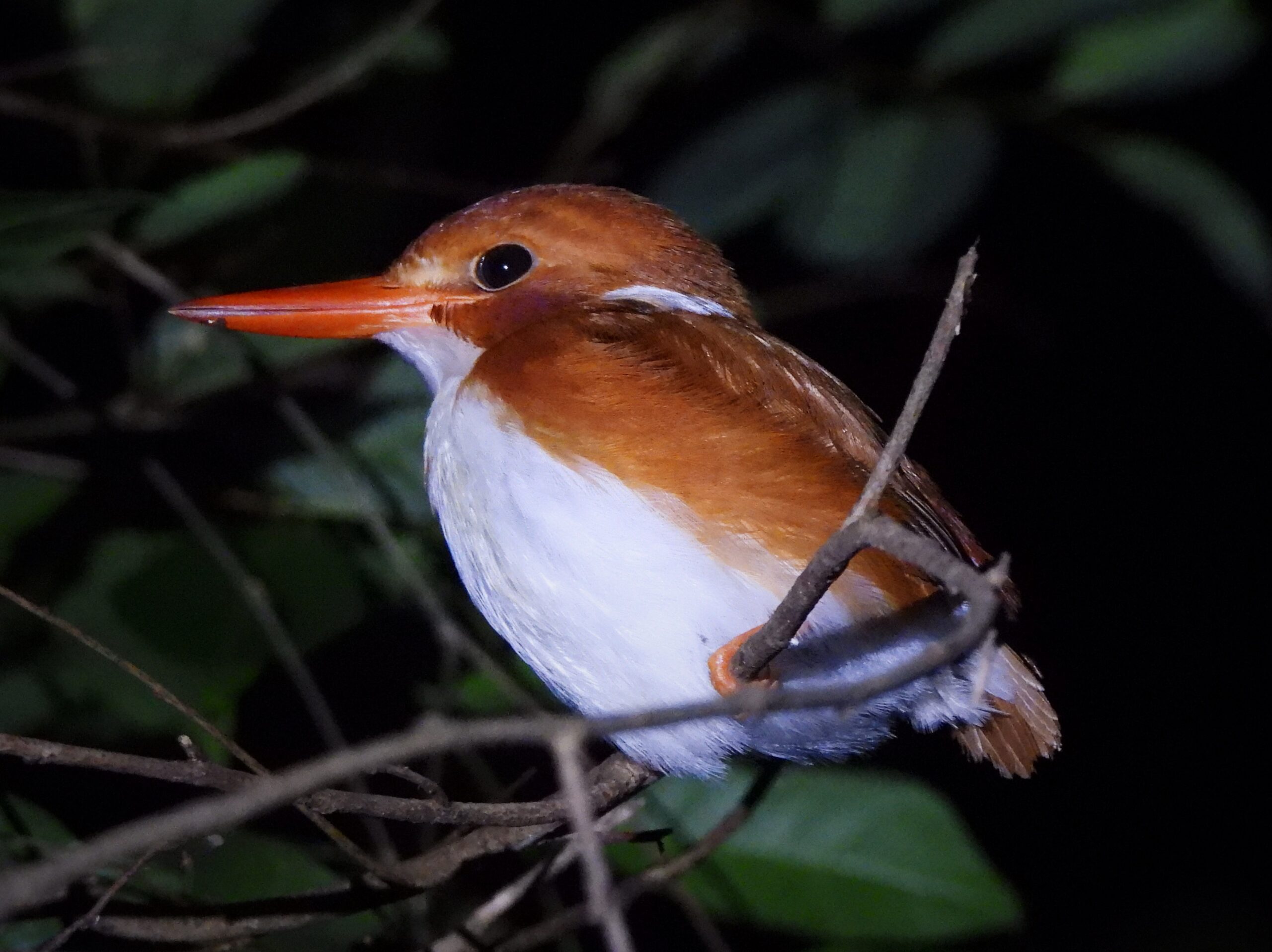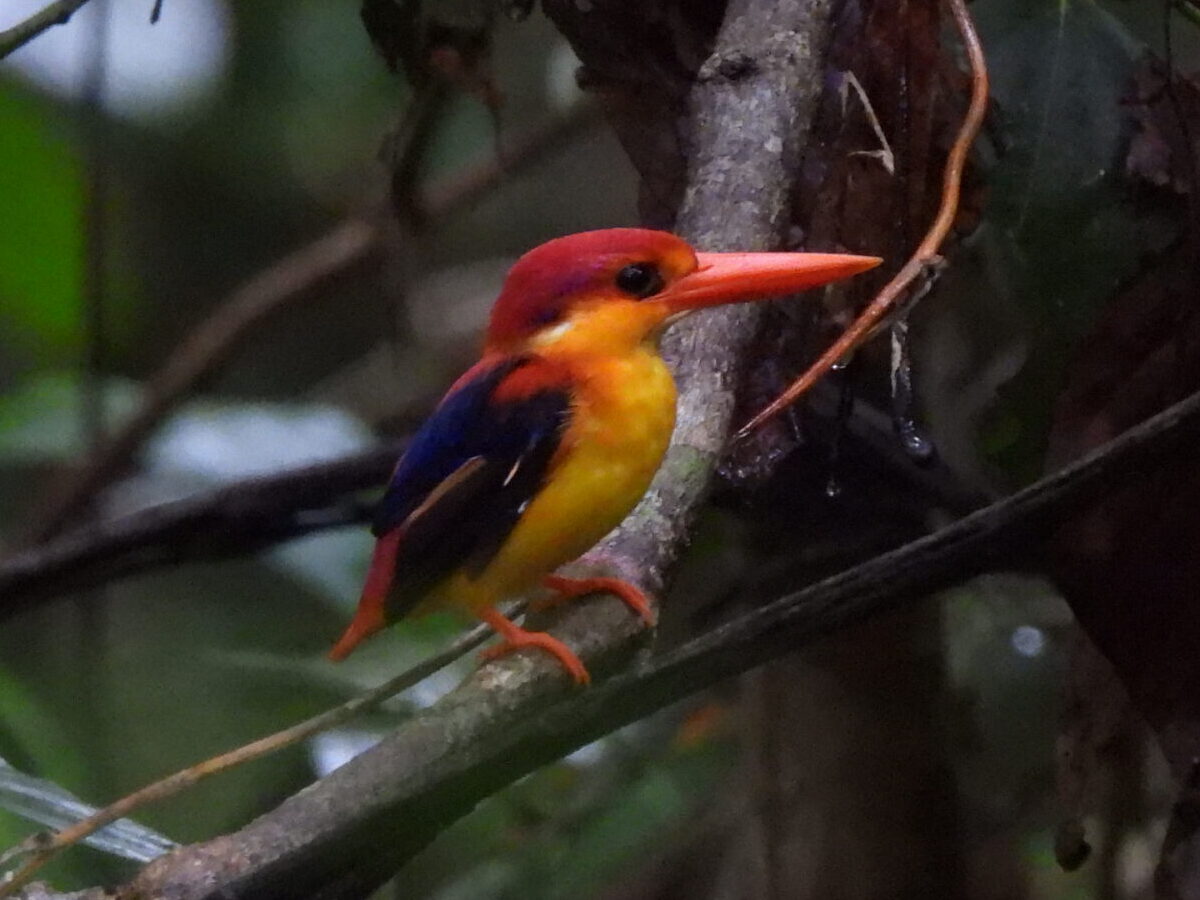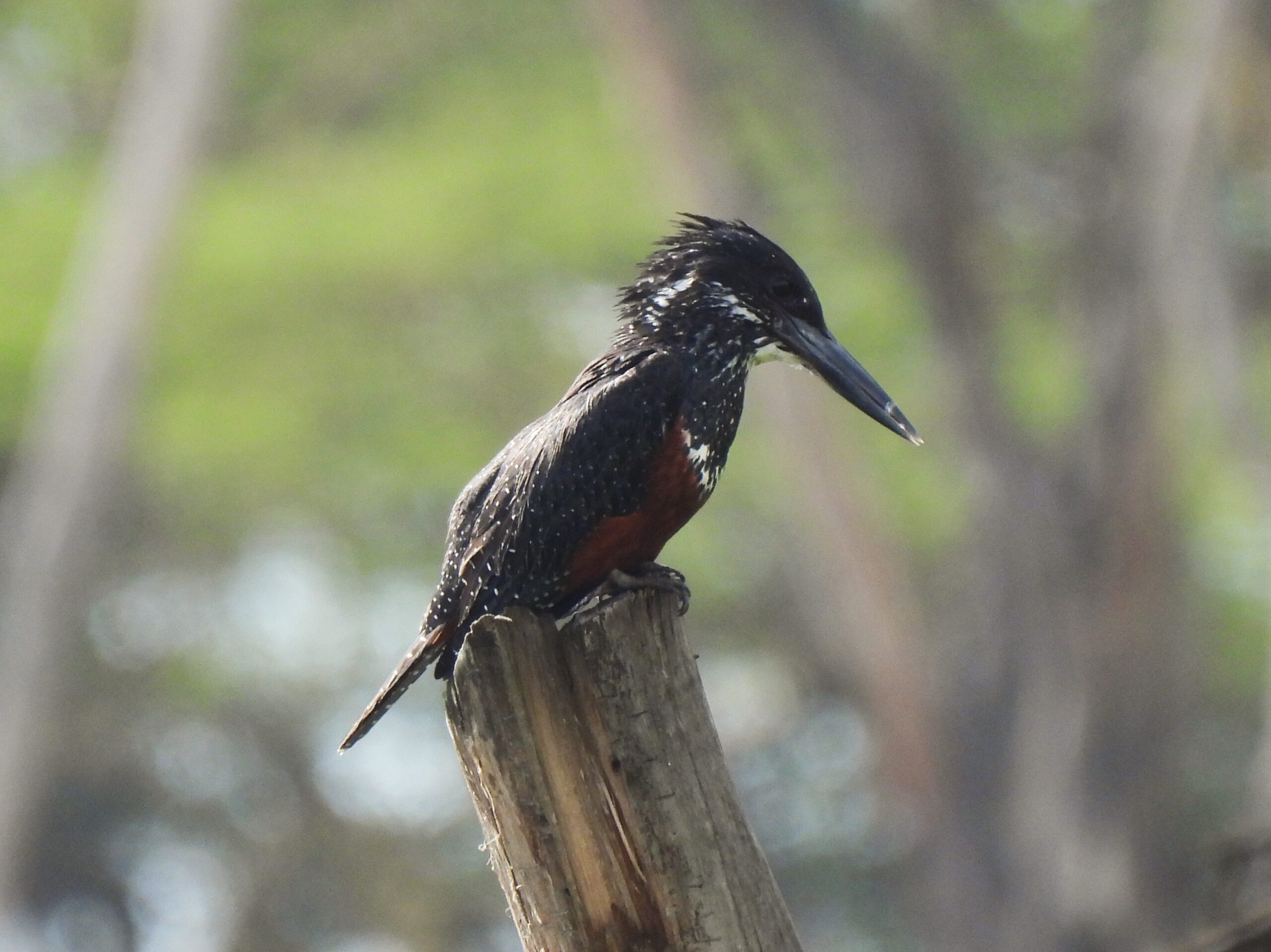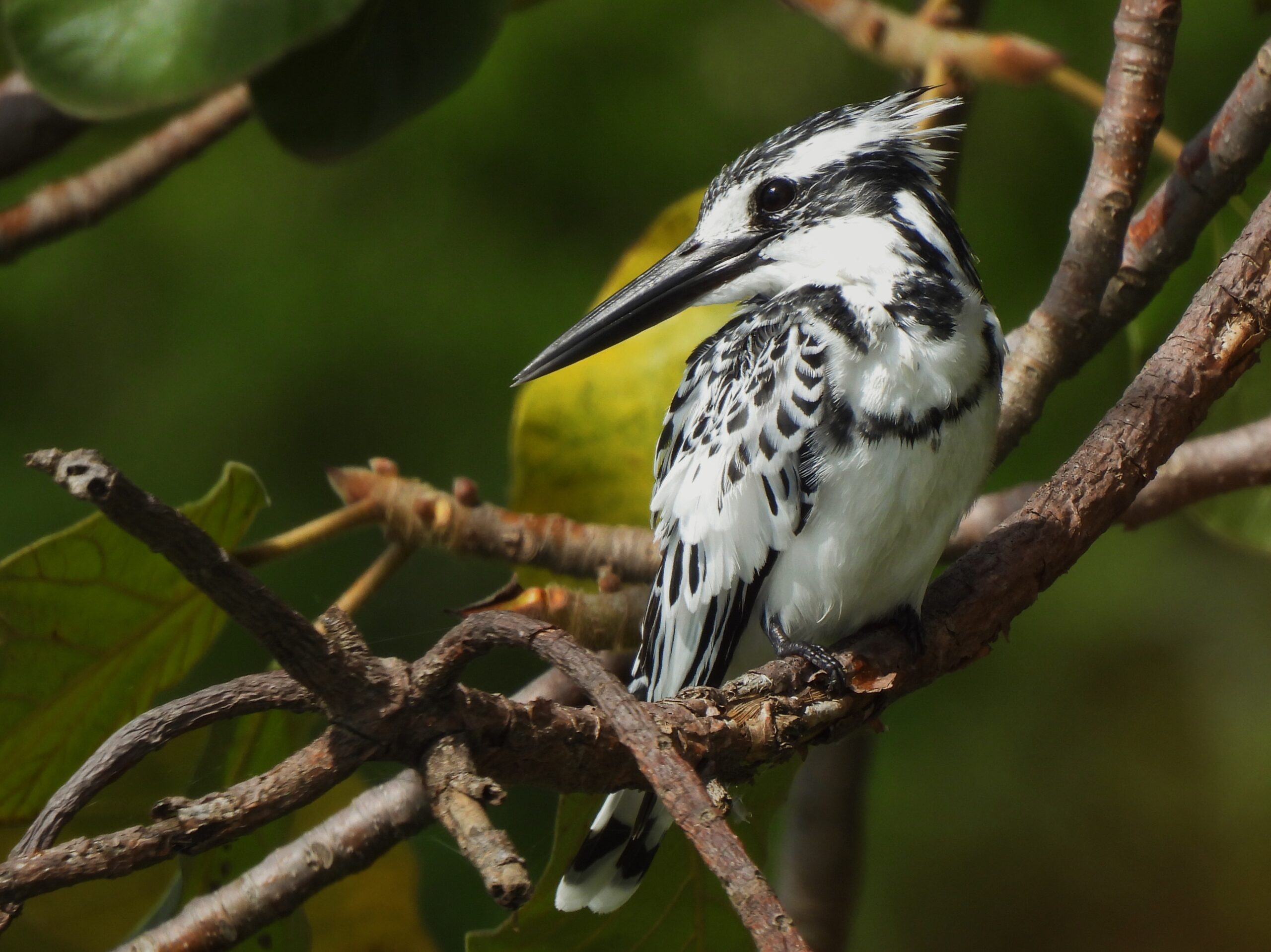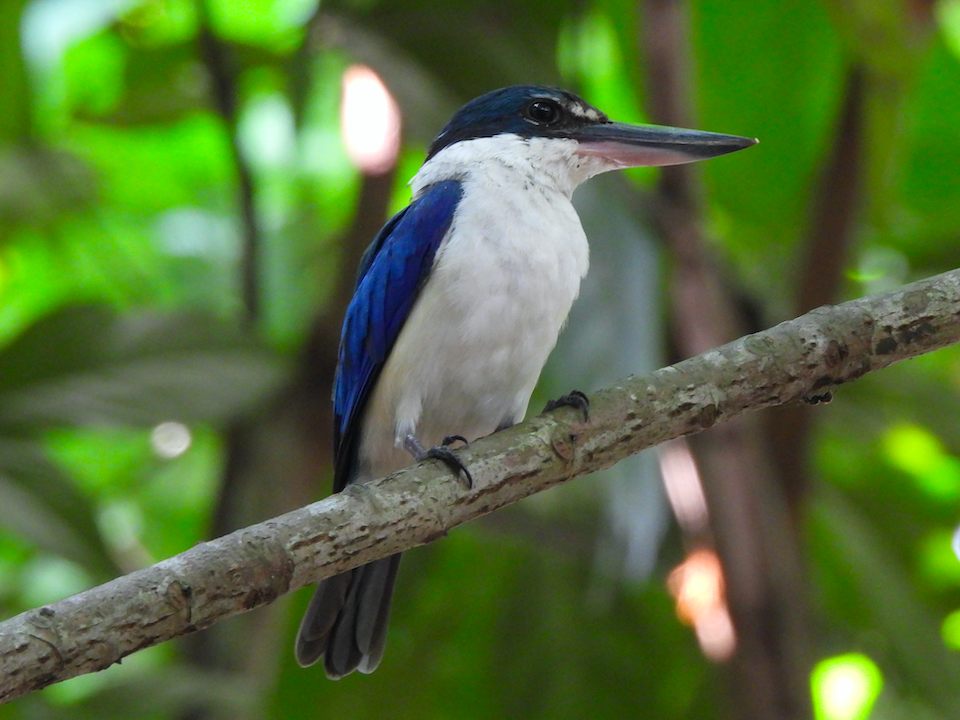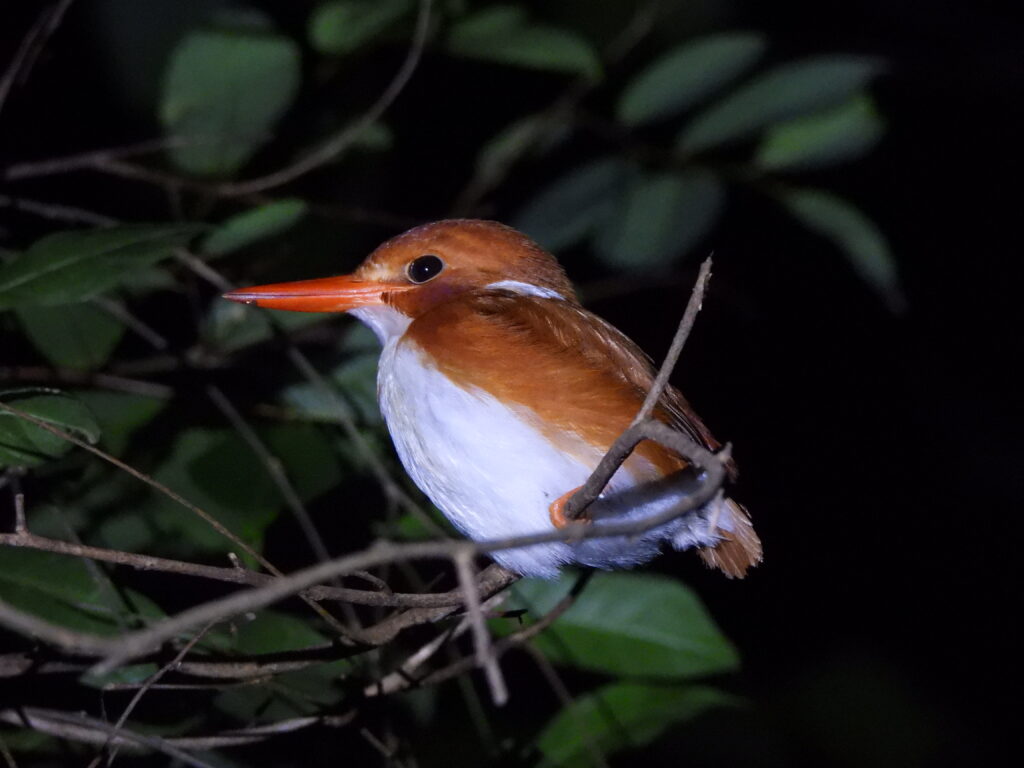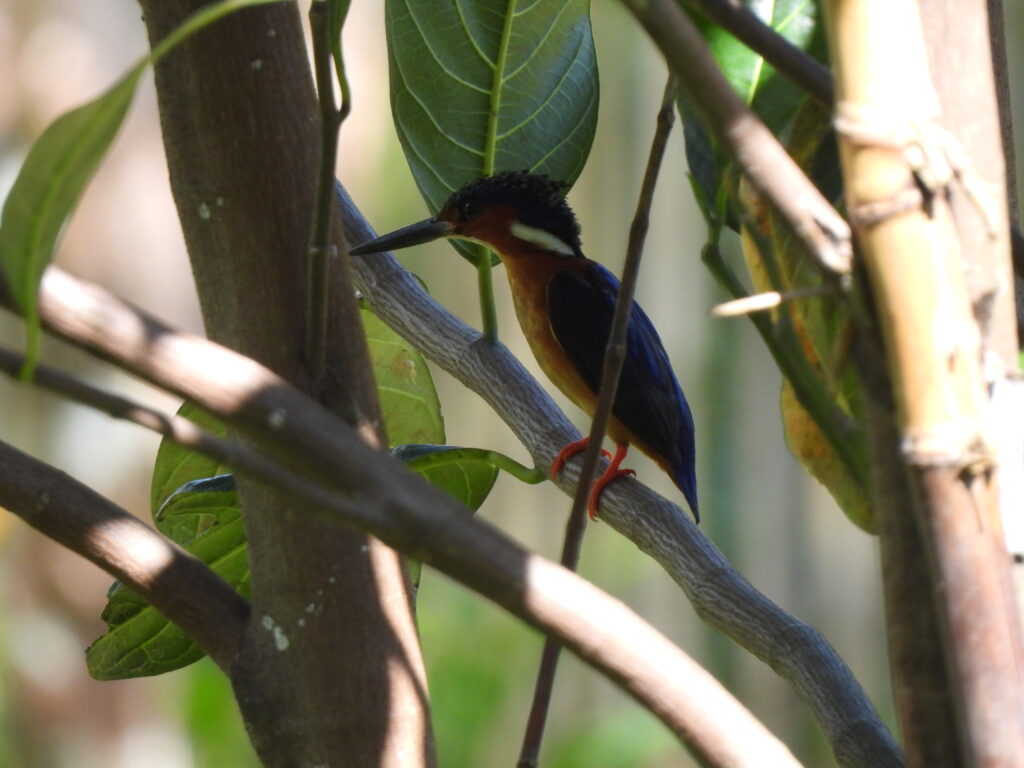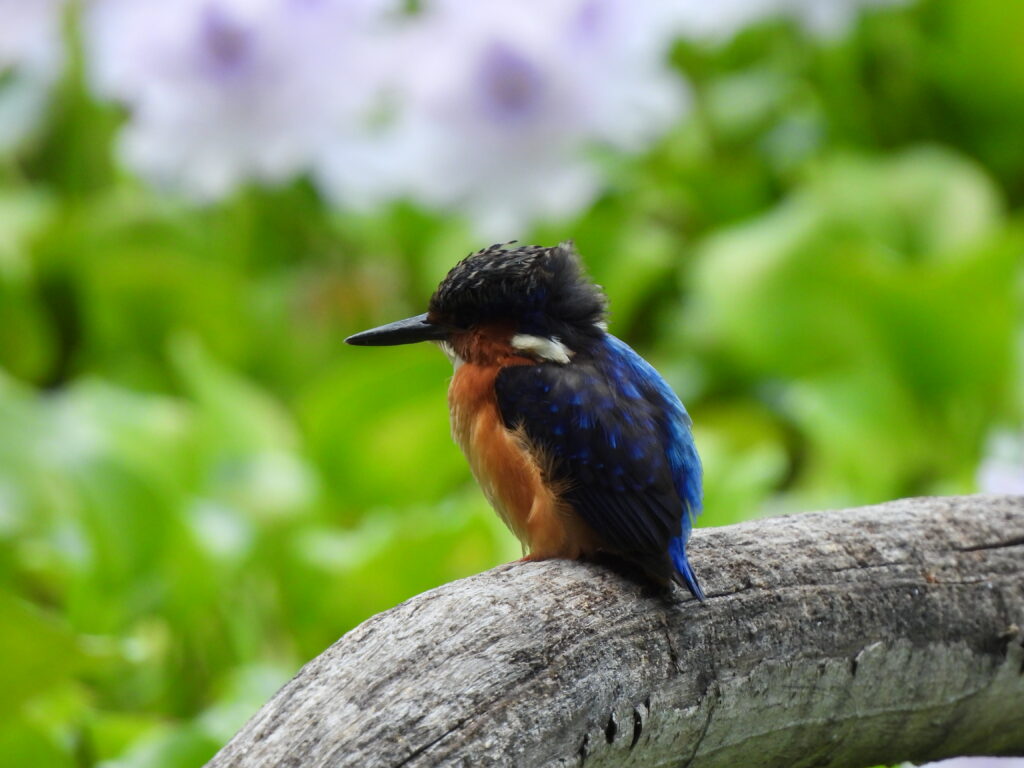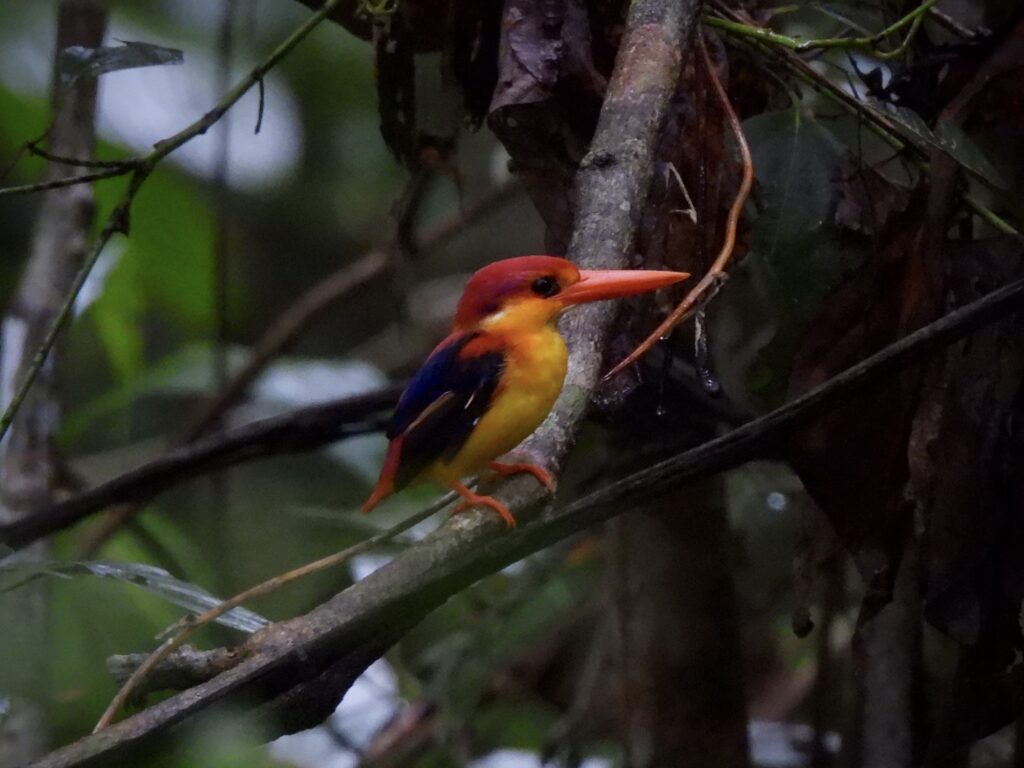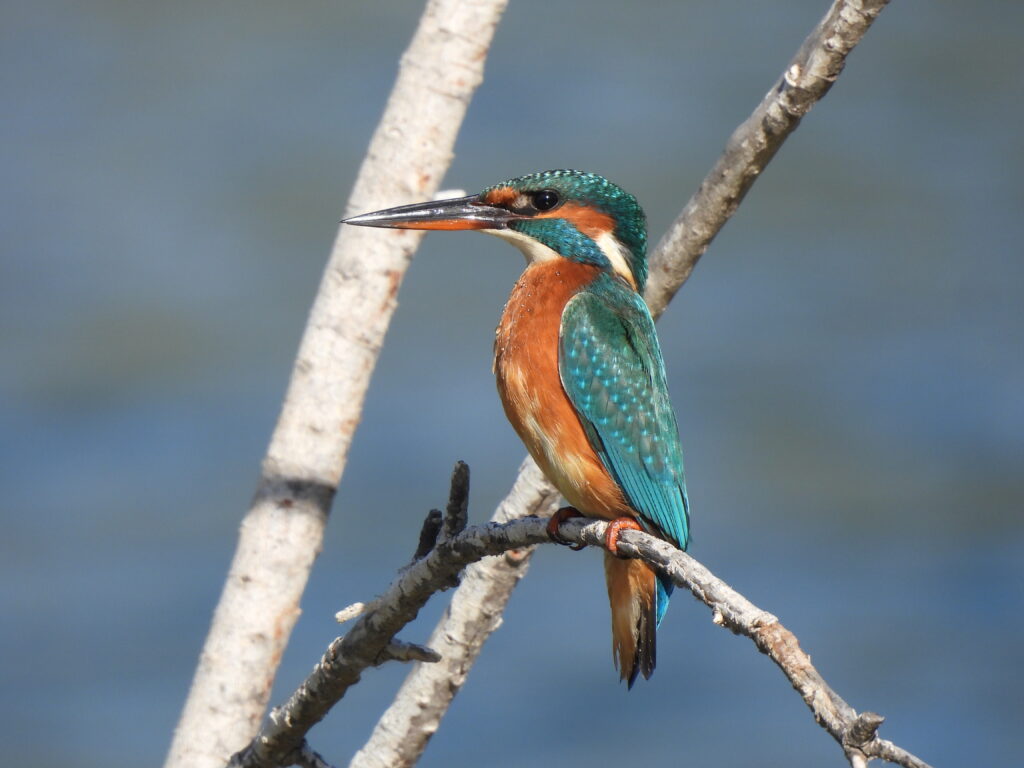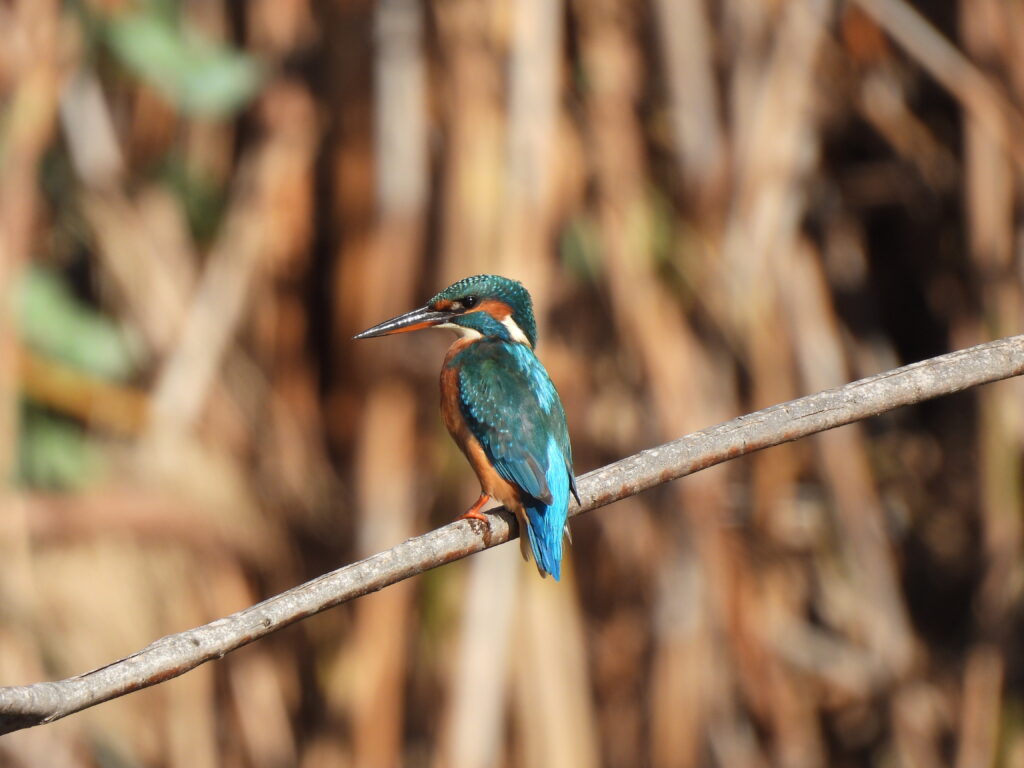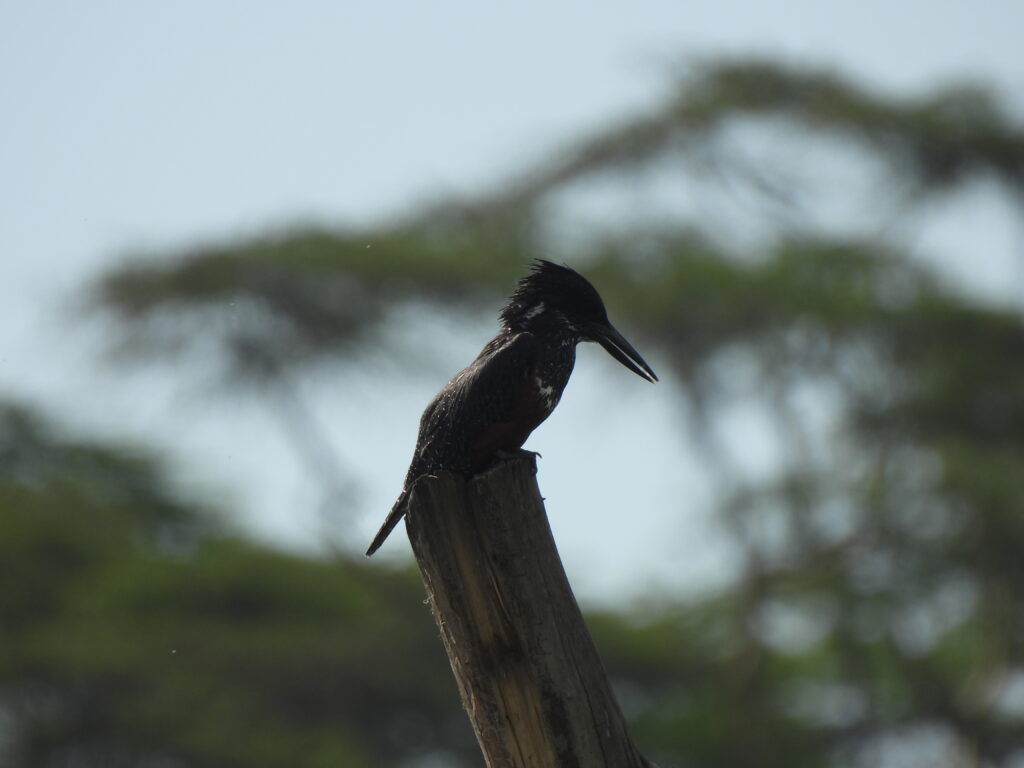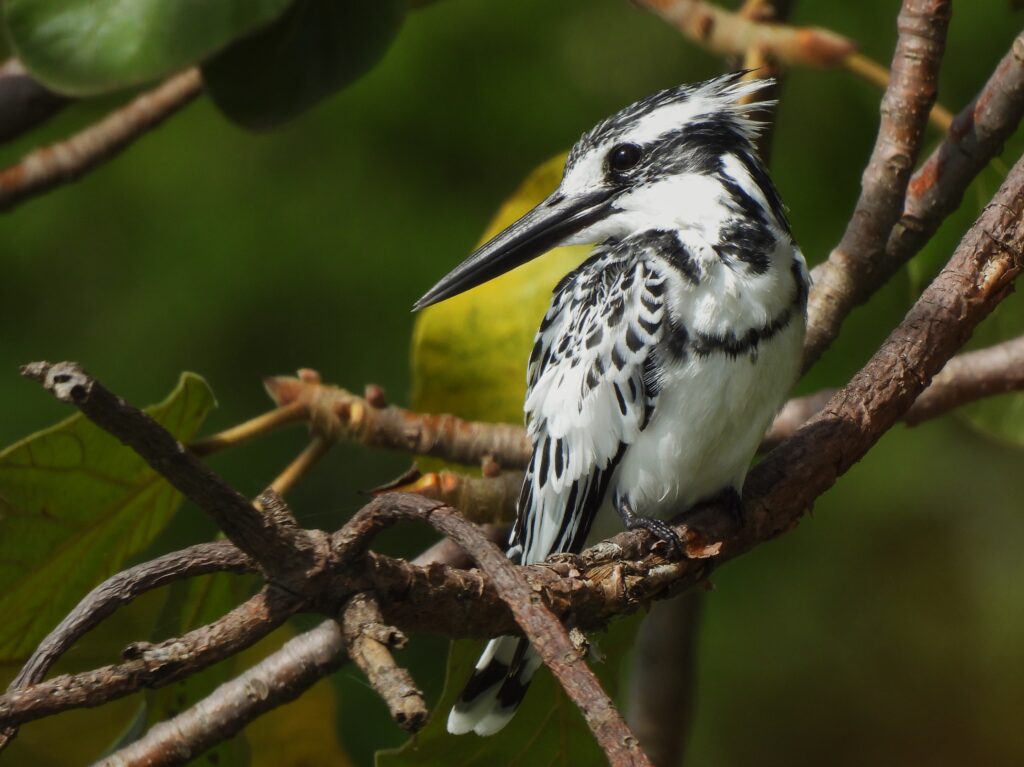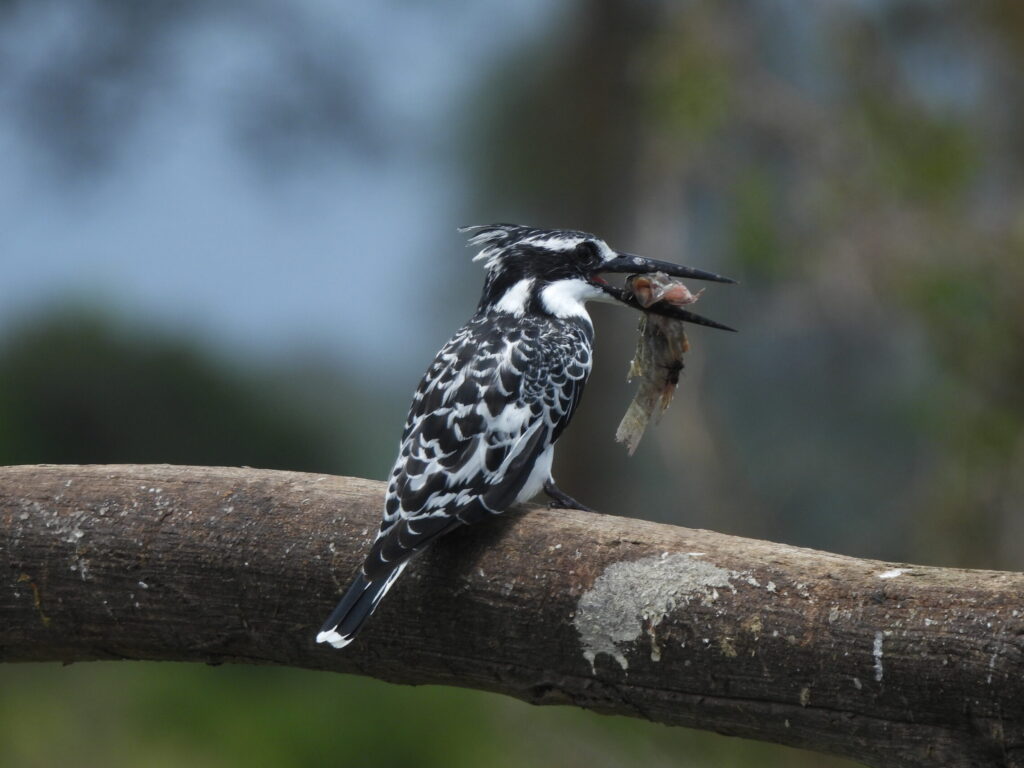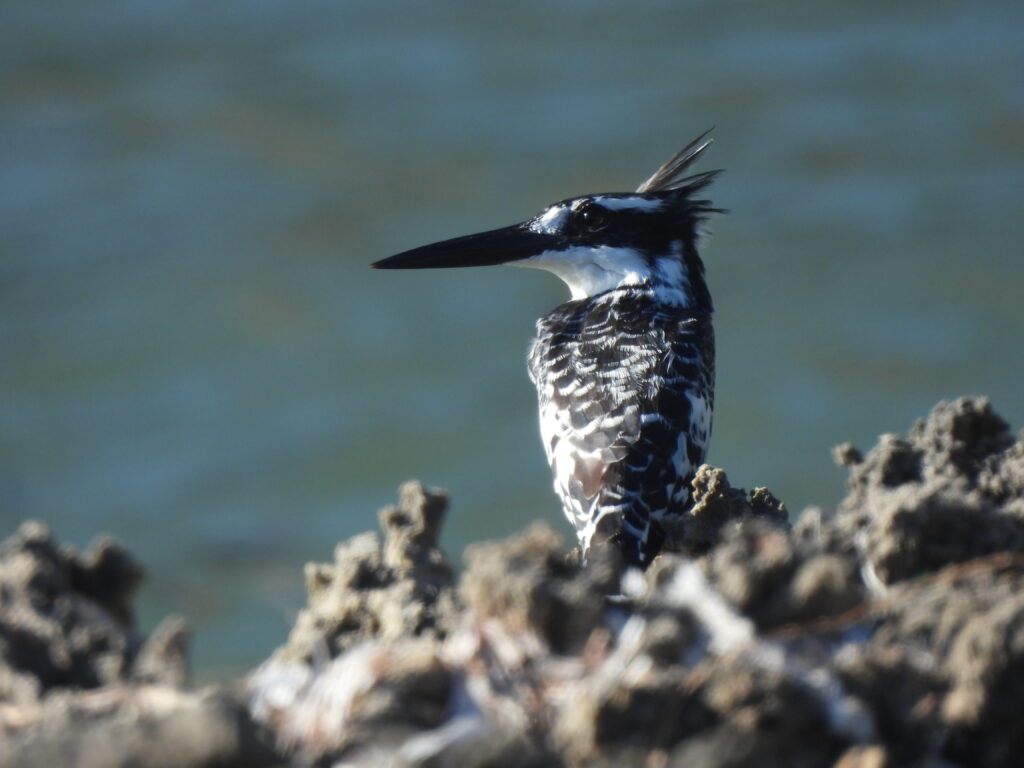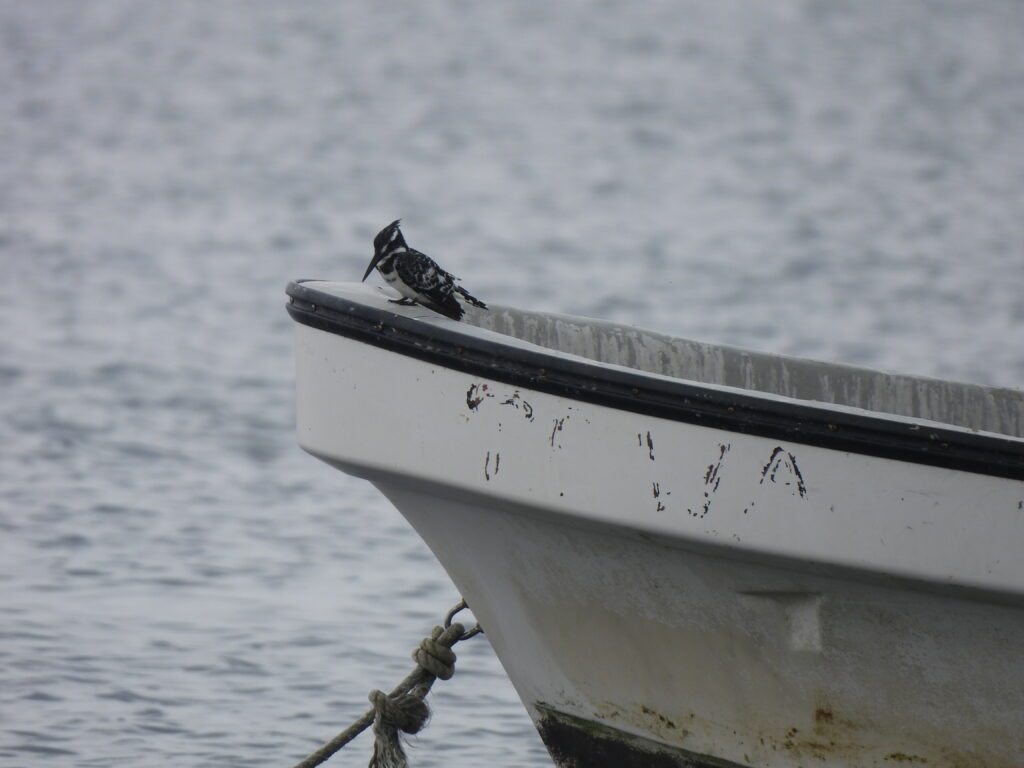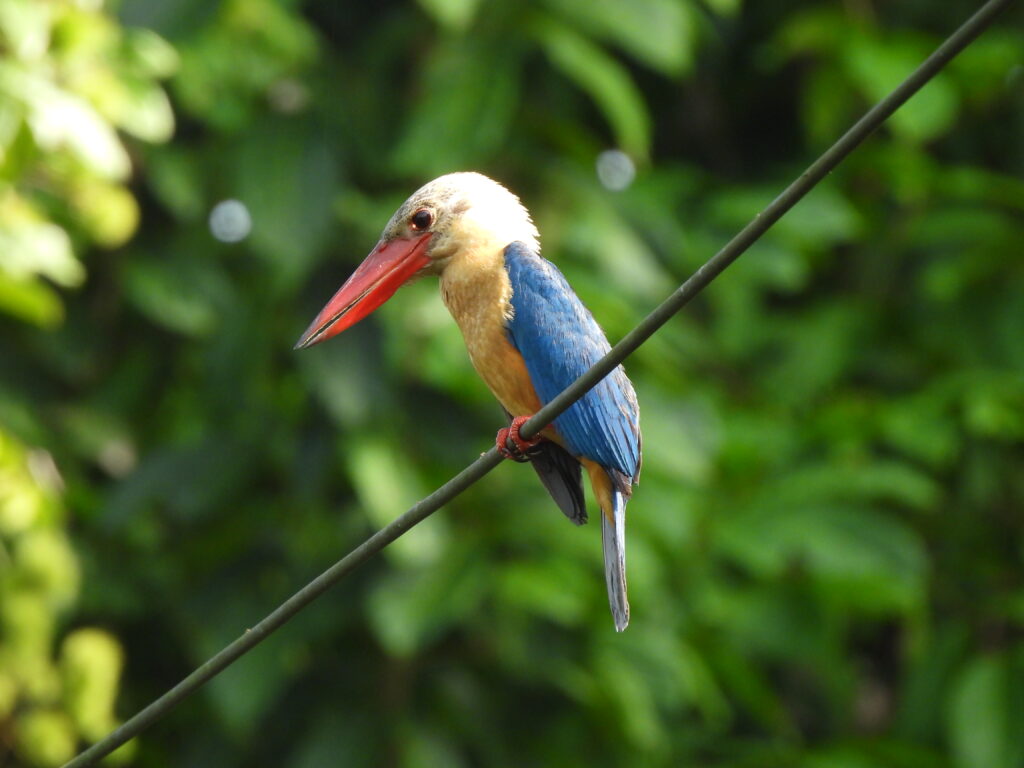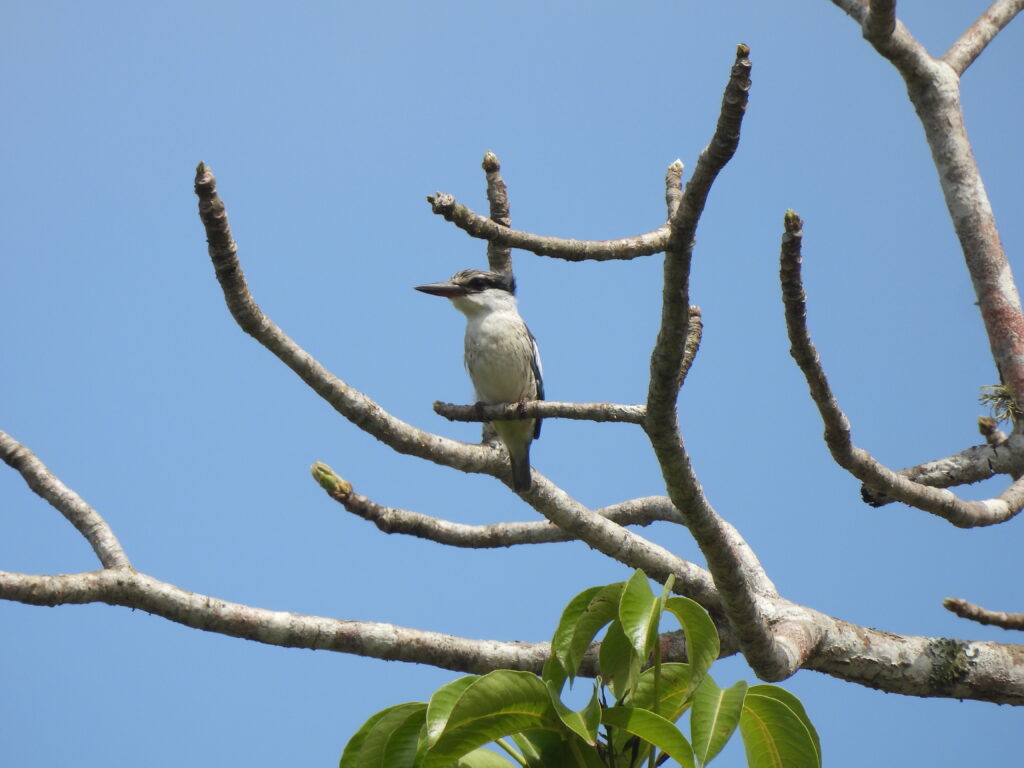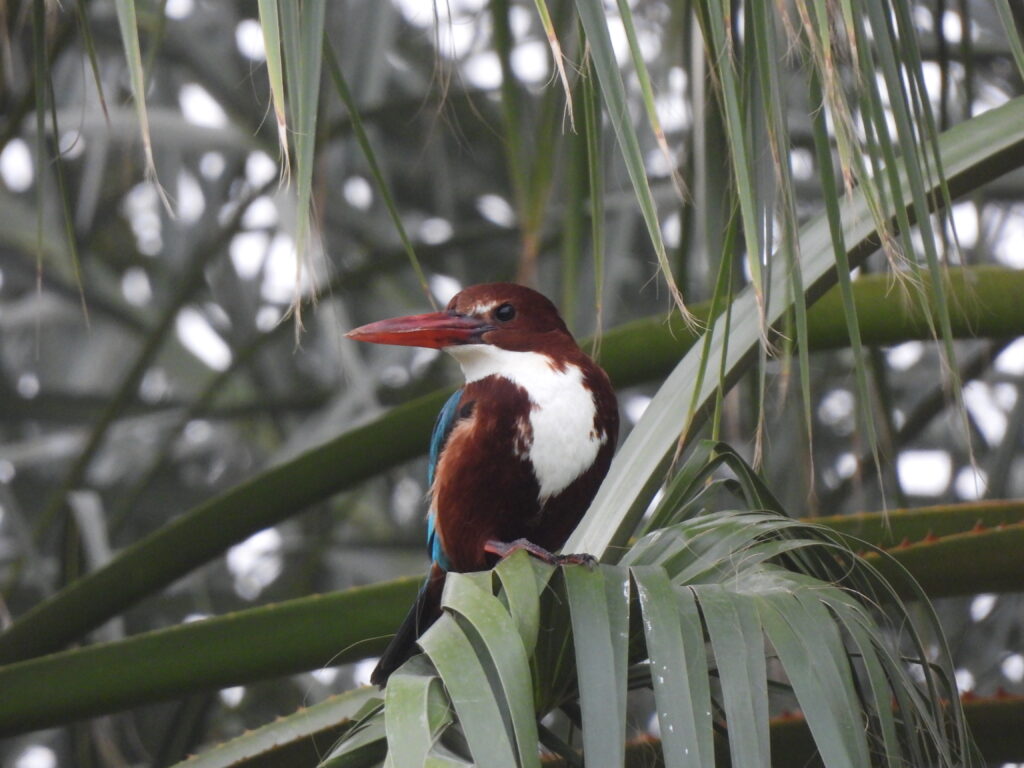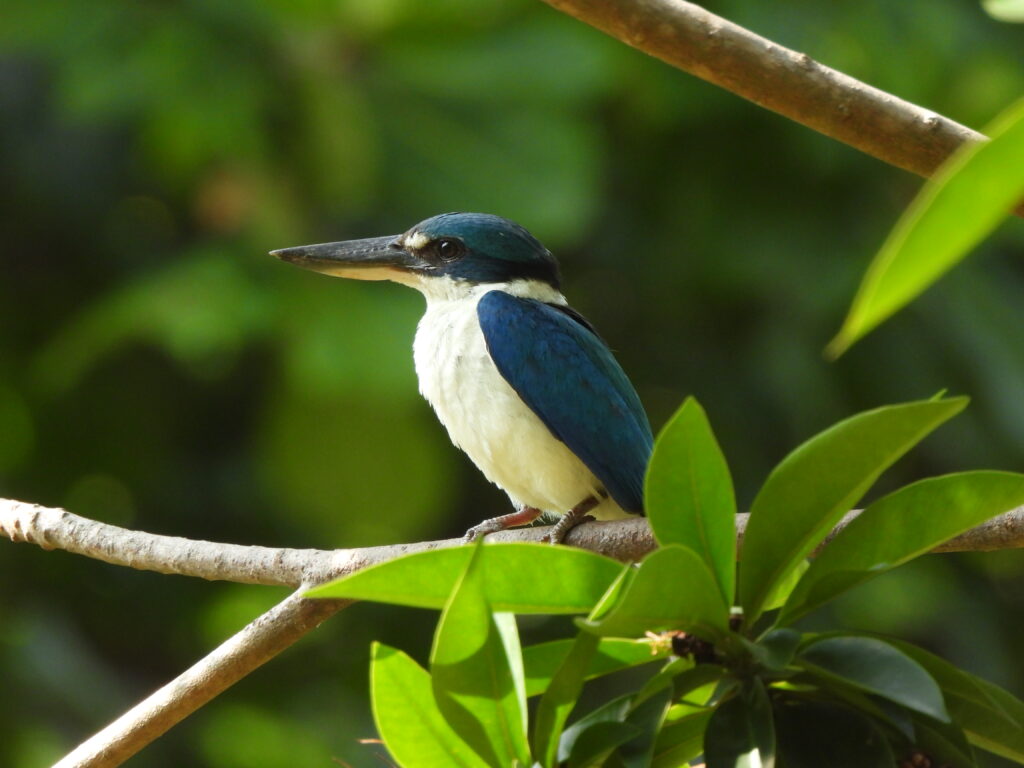The kingfishers (family Alcedinidae) are a diverse family of birds belonging to the order Coraciiformes distributed across all continents except the polar regions. Albeit being most popular for their skillful fishing technique, unique morphology featuring bright plumages, large bills and extremely short tails and legs, the majority of the family members are actually distributed in tropical rainforests and do not really rely on water bodies but rather hunt on large insects and small vertebrates. Both sexes are generally similar, and they usually nest in holes often dug by themselves in sandbanks.
The family comprises 111 species in to 19 genera, traditionally classified in three distinct groups. The most basal clade, the river kingfishers (subfamily Alcedininae), include the Afrotropical pygmy kingfishers — genera Ispidina (2 species) and Corythornis (4 species) —, the type genus Alcedo (8 species), which is distributed along the Old World and includes the only species of the family widely distributed in Europe; and Indomalayan and Australasian dwarf kingfishers of genus Ceyx (23 species). Some of these species are forest-dwellers, although others are strongly dependent on specific freshwater conditions.
The water kingfishers (subfamily Cerylidae) comprises larger, water-dwelling members of the family include widespread genus Megaceryle (4 species), Old World genus Ceryle (1 species) and New World genus Chloroceryle (4 species).
The tree kingfishers (subfamily Halcyoninae) includes generally large kingfishers of woodlands often far from water bodies. Genera Lacedo (1 species) and Pelargopsis (3 species) are endemic to the Indomalayan realm. Type genus Halcyon (12 species) is well spread across tropical Africa and Southeast Asia with one species reaching the Middle East. Numerous genera of this clade are mostly restricted to Australasian rainforests and woodlands, such as genera Cittura (2 species), Tanysiptera (9 species) — collectively known as paradise kingfishers —, Melidora (1 species), Dacelo (5 species) — widely known as kookaburras —, Caridonax (1 species), Actenoides (6 species), Syma (2 species) and the specious genus Todiramphus (29 species), which includes species ranging through Southeast Asia to the Sundarbans and the Middle East and across different Melanesian and Polynesian archipelagos.
Madagascar pygmy kingfisher
Corythornis madagascariensis
Endemic to Madagascar, where it is an uncommon inhabitant of rainforest and dry deciduous forest. It is the only member of its genus lacking blue markings, sporting a rufous and pure white plumage. I have seen this species in Madagascar.
Malagasy kingfisher
Corythornis vintsioides
Endemic to the Madagascar region, where it inhabits mangrove forests and wetland vegetation — unlike the only other kingfisher of Madagascar, the Madagascar pygmy kingfisher. A distinct form inhabits Mayotte and Comoros Islands. I have observed this species in Madagascar.
Malachite kingfisher
Corythornis cristatus
Widespread in most freshwater habitats in Subsaharan Africa. Very small in size and bright colored, with most individuals showing a rufous belly but birds of some areas sporting a white vent. I have observed this species in Kenya.
Common kingfisher
Alcedo atthis
Widespread in water bodies all across Eurasia and extreme north Africa east to Indonesia and the Bismarck and Solomon Islands, with some plumage variation across its range. The only member of the family to be regularly found in Europe. This is a localized breeder and common wintering species in Alicante.
Rufous-backed dwarf kingfisher
Ceyx rufidorsa
Distributed along the Malay Peninsula, Palawan, Borneo, Sumatra and Java east to Nusa Tenggara. Despite its very bright plumage, it keeps a very low profile in the shadiest spots of rainforests, often near flowing streams. I have seen this species in Borneo.
Giant kingfisher
Megaceryle maxima
The largest kingfisher of Africa, inhabiting rivers, lakes and coastlines. It has two forms: one occurs in wooded savanna and the other inhabits tropical rainforests. Males and females differ in the extent of chestnut plumage in the belly. I have observed this species in Kenya.
Pied kingfisher
Ceryle rudis
Widespread kingfisher of rivers, lakes, estuaries and mangroves of Subsaharan Africa, the Middle East, the Indian Subcontinent, Southeast Asia and east China. It often hovers to catch fish. I have seen this species in Kenya, Vietnam and India.
Stork-billed kingfisher
Pelargopsis capensis
Massive kingfisher of large streams and lakes from south India and the Ganges valley east to Borneo, the Philippines and Nusa Tenggara in Indonesia. Birds west of its distribution range have dark brown heads whereas those in the east have pale yellow heads. I have seen this species in Singapore, Borneo, the Philippines, Vietnam and India.
Striped kingfisher
Halcyon chelicuti
Found in arid and thorn savanna across Subsaharan Africa. It is mostly inconspicuous in the canopy of dry woodland trees, except when it delivers a loud, distinctive call. I have encountered this species in Kenya.
White-throated kingfisher
Halcyon smyrnensis
Abundant in habitats often but not necessarily close to water in the Middle East, Persian Gulf, all the Indian Subcontinent, east China and Southeast Asia south to Sumatra and Java. Often perches on wires and fences. I have seen this species in Singapore, Peninsular Malaysia, Vietnam, urban Kuwait and India.
Collared kingfisher
Todiramphus chloris
Widespread kingfisher of mangroves, tidal flats and forested areas across the Indomalayan and Wallacea regions, with isolated populations in the west in the Sundarbans and Goa in the Indian Subcontinent and in Saudi Arabia and Oman in the Arabian Peninsula. Extremely variable, with a myriad of different forms along its wide range with still unclear taxonomic relations. I have seen this species in Singapore, Borneo, the Philippines and Thailand.

